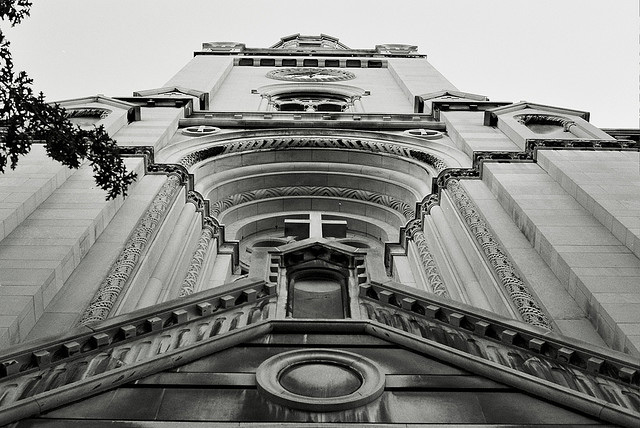The Gothamist
May 18, 2011
http://gothamist.com/2011/05/18/catholic_church_sex_abuse_report_do.php
 |
| Most Holy Redeemer Church alex atallah's flick |
Earlier this year, Archbishop Timothy Dolan posited that the Catholic church's far-reaching sex abuse scandal "needs to haunt" the institution for some time. To that end, the U.S. Conference of Catholic Bishops commissioned a study on the matter five years ago, trying to identify the factors which led to the widespread sex abuse. And they concluded in the controversial report that though celibacy and a rise in gay priests weren't necessarily to blame, the social and sexual upheaval of the 1960s were a major factor.
Though the 300-page report, formally titled “The Causes and Context of Sexual Abuse of Minors by Catholic Priests in the United States, 1950-2010,” paints a complex picture of the causes of the abuse, it does argue that there was a link between poorly prepared and monitored priests who started around the kooky 1960s and ’70s and the abuse. According to the Times, this “blame Woodstock” explanation has been floated by bishops since the scandal broke out in the US in 2002, and by Pope Benedict XVI after it erupted in Europe in 2010.
The report states: "The rise of abuse cases in the 1960s and 1970s was influenced by social factors in society generally...Factors that were invariant during the time period addressed, such as celibacy, were not responsible for the increase or decline in abuse cases over time." They found that many more boys than girls were abused by priests, but only because of easy access, and argued that no particular “psychological characteristics,” “developmental histories” or mood disorders distinguished abusers from non-abusers: “Individual characteristics do not predict that a priest will commit sexual abuse of a minor. Rather, vulnerabilities, in combination with situational stresses and opportunities, raise the risk of abuse.” They even compared those priests with police officers who brutalize citizens.
Conducted by New York's John Jay College of Criminal Justice, the report also notes that more homosexual men began entering the seminaries “in noticeable numbers” from the late 1970s through the 1980s, at a point when reports of sexual abuse dropped and leveled off. But the $1.8 million study, which relied heavily on data provided by the church, has already garnered a lot of criticism, particularly because of their definitions of "prepubescent" children, and "pedophile."
They argue that "it is inaccurate to refer to abusers as ‘pedophile priests,’" because fewer than 5 percent of the abusive priests exhibited behavior consistent with pedophilia, which it defines as a “psychiatric disorder that is characterized by recurrent fantasies, urges and behaviors about prepubescent children." They define "prepubescent" children as those age 10 and under, and as a result found that only 22 percent of the priests’ victims were prepubescent. However, the American Psychiatric Association’s Diagnostic and Statistical Manual of Mental Disorders classifies a "prepubescent" child as age 13 or younger. If the researchers had used that cutoff, a vast majority of the abusers’ victims would have been considered prepubescent.
Some also argue that the report shifts blame away from the church hierarchy, which knowingly protected/shielded the abusive priests, allowing them to get away with their crimes, and that because the Church supplied all the data, it calls all the findings into question: “There aren’t many dioceses where prosecutors have gotten involved, but in every single instance there’s a vast gap—a multiplier of two, three or four times—between the numbers of perpetrators that the prosecutors find and what the bishops released,” said Anne Barrett Doyle, the co-director of BishopAccountability.
Any original material on these pages is copyright © BishopAccountability.org 2004. Reproduce freely with attribution.